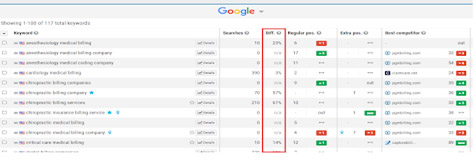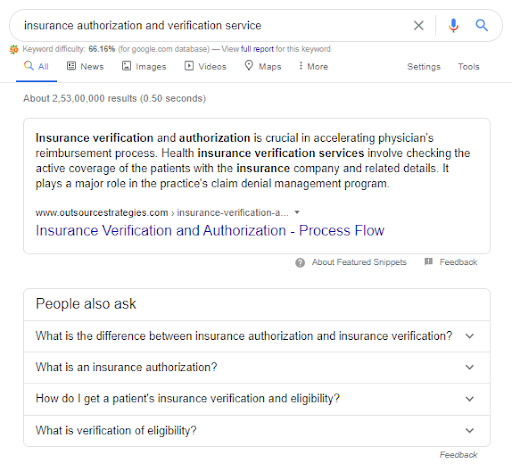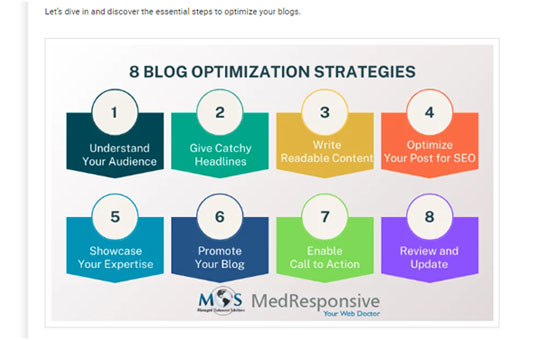Do you want to drive more organic traffic to your website?
In fact, attracting more organic traffic in to your website is no longer a complex task, if you are well-versed in the SEO benefits that blogging brings. Blogging – which was once regarded as a leisure activity – has now become one of the significant elements of search engine optimization (SEO) and is one of the much sought-after digital marketing services. Blogging has become a powerful tool to share your area of expertise, build better relationships with clients, and make connections online. Creating quality-packed and informative blog posts by answering your readers’ questions can improve your chances of ranking.
Are Blogs Good for SEO?
For a website, valuable traffic can arise from different avenues like social media, email lists, YouTube, forums, and referrals from other bloggers. However, search engines still remain one of the biggest sources of traffic to most websites. People use search engines like Google to find information, solve a problem and research or buy a product. Blogging helps improve search engine optimization (SEO) in many ways that enhance your ranking or positioning in the search engine results pages (SERPs). Some of the top benefits of blogging for SEO include –
- Blogging helps answer your target audience’s questions, thereby showcasing your area of expertise. By reading your blog posts, the audience dwell time on your site increases.
- If your blog post contains high quality content that offers value, the bounce rate also goes down.
- You can use long-tail keywords in your blogs and get back links (both of which improve your ranking in the SERPs).
Quick SEO Optimization for Blogs – Tips
In today’s busy environment, many businesses do not find time to create blog posts to promote their website. However, businesses that post blogs in their websites have a marked lead over others that do not make these posts. Many people do not realize the significance of blog posts, how these blogs can improve SEO, and how often they should post blogs. Studies suggest that publishing over 11 plus blog posts a month is good for SEO. Blogging frequency depends on several factors like company size and goals behind blogging like – whether you are planning to drive traffic or aiming to increase brand awareness.
If your goal is to drive organic traffic to your website, you need to blog 3-4 times a week (in case you are a small business) and 4-5 times weekly including both fresh and updated content (if you have a large blog). On the other hand, if your goal is to build brand awareness, work on 1-2 fresh blog posts weekly (if you have a small blog) and 3-4 new posts (for large blog) and refresh others weekly. No matter what your blogging frequency is, it is important to follow a consistent posting schedule, so that your audience knows in advance when to look for your posts.
Now, how do you write a blog for SEO? Always make sure to write for the reader, not the algorithm. Here discussed are some expert tips for optimizing your blog posts for SEO –
- Research Your Target Audience: Doing adequate amount of research before writing blogs is important. Before writing a blog, identify your primary audience – people who will be interested in reading your blog, their age, education and other related aspects. Begin your blogging thinking of how a prospective client would search for your business. When people search, it may be a simple search query related to what your business offers that they would be typing in the search box. Therefore, create blogs on various aspects of that possible search query. People will be searching in many different ways, entering many different kinds of search terms or keyword phrases. So, it is important to perform a detailed keyword research which can help you plan various blog topics.
- Grab Your Readers’ Attention: When posting blogs, select topics that grab the attention of your readers. For instance, instead of posting on a general topic, try to bring in content related to recent news or updates. Create unique and novel content that may catch the attention of the readers from the very first line itself. If you succeed in attracting the interest of the readers from the very first few lines itself, then the better will be your chances that they will read the full blog.
- Right Keywords Matter: Keywords research is a significant aspect that lays the foundation of optimization. By targeting or placing the right type of keywords, you can help Google understand what your blog content is all about. This in turn increases the likelihood of your blog content popping up in the search results. Try to focus on one specific keyword per blog as this helps you laser target your blog for that keyword. Other aspects related to keyword selection that must be considered include –
- Know the user intention: Understand the user intention and try to target keywords based on that. Identify what the searcher is looking for and what they expect to find when they search for those keywords in Google. For instance, if you are promoting CAT T-shirts through your blog, you will need to rank for keywords like “buy CAT T-shirts,” “purchase CAT T-shirts” etc. In that way, users who are looking to purchase your product will likely see your store.
- Focus on low difficulty keywords: This is an important aspect to consider while choosing a keyword for your blogs. The higher the keyword difficulty, the fiercer the competition and the harder it will be to rank for the same. Make sure to select keywords that have a decent traffic volume with low competition. Free tools like AdWords Keyword Tool or a premium tool such as Ahrefs can be used to find keyword difficulty.
- Focus on long-tail keywords: Long-tail keywords are three- or four-phrase keywords that are very specific to what you are selling. Normally, these keywords are easy to rank due to their low competition. It is important to use these keywords in the right places in your content, for example, in the title, description, and subheadings of your content. However, never try to stuff your keywords in an attempt to manipulate your website’s ranking as this can create a negative impact.
- Make blog posts frequently: People who blog should publish genuine, fresh and appropriate content related to their specific area of business on a frequent basis. Make sure to recycle content topics (when appropriate) as most of these posts must be unique.
- Compelling Titles and Meta Descriptions: Click through rate (CTR) for your page in the search result is also a ranking factor on Google. For instance, if your blog or article is listed in the third position for a keyword and you managed to receive more clicks than the first, your content will eventually rise to the second or first. In order to get high CTR and to stay on top of the search page, you will need to include compelling titles and descriptions that catch the immediate attention of the searcher and tempt them to click on the page. The title should be within 55 characters. Other things to keep in mind when writing an SEO title and meta description for your blog post include –
- Never stuff keywords
- Add your keyword in the title and description
- Don’t let your title and description cut off in Google. Give the searcher a complete idea of what your content is about.
- Make Your Blog Responsive: Google utilizes mobile-first indexing which means it looks at your mobile site to determine how to rank it in the search results, even if the search is on desktop. Therefore, it is important to make your website work well on mobile devices, even if most of the traffic is on desktop. To ensure this, choose a responsive “WordPress” theme and install it in your blog.
- Optimize for Featured Snippets: To get the most of your blog content, it is important to optimize your blog to show up in featured snippets. Featured snippets are shown before the first position, usually in a box with an image, video or a table. Featured snippets include – paragraph, video, table and list (both numbered and bulleted). They show up in the search results, which helps you to get more clicks. Optimizing your blog content for the featured snippet will drive more web traffic in the long run.
- Optimize Blogs with Images & Infographics: Include images and infographics in your blog content as this can increase the traffic and also cut the monotony of large blocks of text. A striking image relevant to your content can hold the audience. In some cases, there may be concepts or points that are quite hard to understand. An appropriate image or infographic can simplify these concepts thereby entertaining the audience. When compared to images, a creative and effective infographic can make difficult concepts easily understandable in different parts of the blog. Apart from having appropriate images, make sure your images load fast. This can be ensured by using a WordPress plugin called “ShortPixel” that can easily compress your images and make them load faster.
- Submit a Sitemap: This is an important aspect that will help Google understand the structure of your blog, and help Google easily crawl all your pages. Google will eventually find any site that is linked to from other sites across the web. Submitting a sitemap can help your website rank faster. For instance, using “Yoast Plugin” can help generate a sitemap file.
- Add Source Links: If you happen to quote some research material or statistics from blog posts or articles written by others, add reference links. Linking may promote the blog or article you are linking to, but will also make the readers aware that you are doing extensive research before writing the blog content. It proves that you are actually presenting research-based information, rather than sounding authoritative. In addition, linking to other blog posts also present the possibility of those bloggers linking back to you, which will help improve search rankings. Also, link to other blogs or other pages in your website. Once you have got your blog posts done make sure to popularize it by sharing via social media platforms. Simply posting the blog in the website may not make Google’s algorithms notice it.
- Add Videos to Your Blogs: Videos are an excellent medium for engagement as this may be the very first thing which readers may check out when they see your blog posts. Adding short videos (vlogs) explaining a particular point in your textual blog posts can help increase your readership and followers. A short video explaining a specific point could make readers understand what will be the content of the rest of the blog. This in turn can motivate them to read the rest of your blog. For instance, YouTube videos have become very popular as they attract your target audience by explaining a particular concept in an interesting manner by including visuals with an invisible narrator. In some case, you don’t even need a narrator. Subtitles can do that job effectively.

Always keep a clear and definite focus when you start writing a blog. In many cases, bloggers may try to stuff each and every piece of information about a specific topic into a single blog post and make it lengthy. However, the result could be un-engaging. For people who are relatively new to blogging, mastering these above-mentioned tips is a great way to start. However, bear in mind that implementing these tips won’t take your blog to the first position overnight. When it comes to SEO, you need to be patient and watchful. Make sure you verify every single change you make and measure the performance of your SEO strategy. As you get more experienced, you will start to develop an individual sense about the specific point where and when you can bend the rules, and when you cannot. By relying on the blog writing services of an experienced company, you can increase your website traffic and conversions in the long run.







